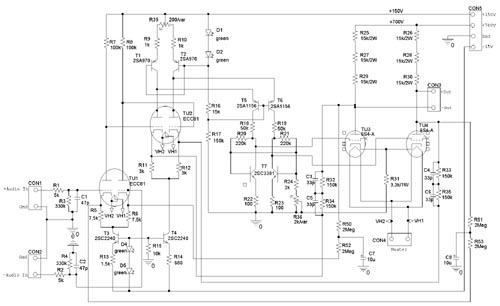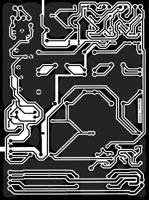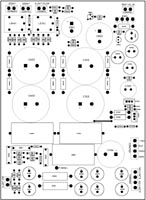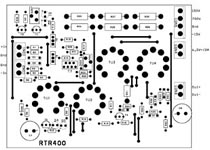|
starting up
wiring diagram
WARNING!!!
Remember that you are handling with high voltages that can be dangerous to life. So if you are working on powerd on devices use only one hand in order to prevent electrical shock.
If the amplifier is connected to the power supply you can begin with adjustment. Connect the input to ground and adjust the output voltage at +Out to +350 Volt using R36. Now use R39 to adjust the voltage between +Out and -Out to zero. Repeat this procedure until there is no longer a difference to measure. The amplifier is now adjusted and ready for operation. Remember that BIAS tends to drift away if using virgin tubes, so adjust the amplifier again after 10 hours ontime.
result
With a supply voltage of 700 Volt the amplifier can output 350 Volt eff. if you increase the power supply to a maximum of 800 Volt it can output up to 400 Volt eff (=1100Volt Vss from stator to stator). The 6S4-A can withstand 2KV peaks and has a maximum power consumption of 8,5W so it will operate within proper limits. The power consumption of the amplifier is 70 Watt. It can drive all STAX Pro headphones (580Volt BIAS), if you reduce BIAS to 280Volt it can drive all STAX headphones. Certainly you can drive other electrostatic headphones like KOSS, Sennheiser, etc, just fit the BIAS to the desired value.
The amplifier sounds very near to my Alpha Centauri V1.0. Incisive is the fine resolution in the high frequencies and altogether it sounds a little bit more like a tubeamp.
measurement results (supply voltage 800Volt, all voltages RMS)
distortion level vs. output voltage f=1KHz:
100Volt: 0,02%
200Volt: 0.04%
300Volt: 0,13%
390Volt: 1%
distortion level vs. frequency:
Uout = 100Volt:
100Hz: 0,025
1KHz: 0,02%
10KHz: 0,05%
Uout = 200Volt:
100Hz: 0,05%
1KHz: 0,04%
10KHz: 0,2%
chanel seperation vs. frequency (Uout = 100Volt):
100Hz: >90dB
1KHz: 70dB
10KHz: 55dB
signal-to-noise ratio: 90dB
output impedance at 1KHz: 2KOhm
frequency response (-3dB): 0,02 - 50000 Hz
|





